In an increasingly busy world, keeping plants at home can sometimes become quite complicated due to the care they require.
In this article, we will discover some plants that are ideal for indoor cultivation and do not require too much attention.
With these options, you can enjoy the freshness and beauty that plants provide without having to worry about complicated care routines.
Join us as we explore how to add a green touch to your home in a simple and practical way.
Indoor plant cultivation is not only a way to beautify our environment but also has proven benefits for our health and well-being.
Plants help purify the air by absorbing carbon dioxide and releasing oxygen, thus providing cleaner and fresher air in our indoor spaces.
Furthermore, caring for and observing the growth of plants can be a therapeutic activity that helps us disconnect from daily stress and connect with nature.
One of the main advantages of cultivating indoor plants is the wide variety of species available that easily adapt to different environmental conditions and levels of care.
From classic green-leafed plants to lush plants with colorful flowers, there is an indoor plant suitable for every gardening style and preference.
So keep reading to discover the 10 Easy plants to grow indoors.
1. Alocasia Polly
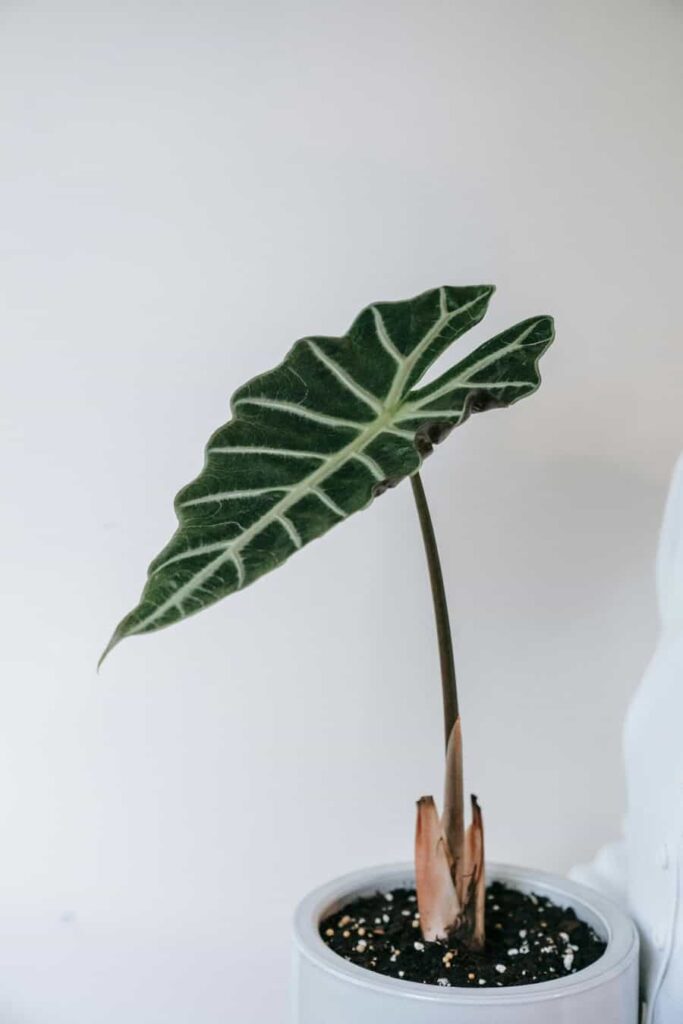
The Alocasia Polly is an indoor plant known for its impressive arrow-shaped leaves, which are a vibrant, intense green color that contrasts with the white or silver veins running through them.
These leaves are large and striking, with slightly wavy edges, providing an exotic and elegant look to the plant.
The Alocasia Polly also features a short, sturdy stem that holds the leaves upright, creating a compact and attractive appearance in any indoor space where it is grown.
The Alocasia Polly typically has a manageable size for indoor environments, with large, showy leaves that can add a touch of exoticism and elegance to any setting.
While it requires bright light, it does not tolerate intense direct sunlight, making it ideal for indoor spaces where light exposure can be controlled.
The Alocasia Polly is not overly demanding in terms of care. It needs moderate humidity, regular but not excessive watering, and well-draining soil.
2. Phalaenopsis Orchid

The Phalaenopsis Orchid is known for its beautiful flat and symmetrical flowers, which can vary in color from pure white to shades of pink, purple, yellow, or even orange.
Its petals are wide and often have a slightly translucent appearance, with a central lip that stands out and attracts pollinators.
The leaves of the Phalaenopsis are thick and fleshy, with an intense green color, arranged in a rosette shape at the base of the plant.
This orchid typically has a long, slender flower stem that rises above the leaves, holding several flowers in clusters, giving it an elegant and sophisticated appearance.
This orchid is capable of adapting well to typical indoor conditions, such as moderate lighting and constant temperature. The flowers of the Phalaenopsis can last for several weeks or even months, making it an indoor plant that provides beauty and color for an extended period.
Although it requires specific care, such as appropriate watering and humidity, the Phalaenopsis is not overly demanding compared to other orchid species.
Like many indoor plants, the Phalaenopsis helps improve air quality by absorbing certain toxins and releasing oxygen during the photosynthesis process.
In summary, the Phalaenopsis Orchid is a popular indoor plant due to its adaptability, the longevity of its flowers, the variety of colors available, its relatively low maintenance, and its contribution to enhancing the indoor environment.
3. Peperomia
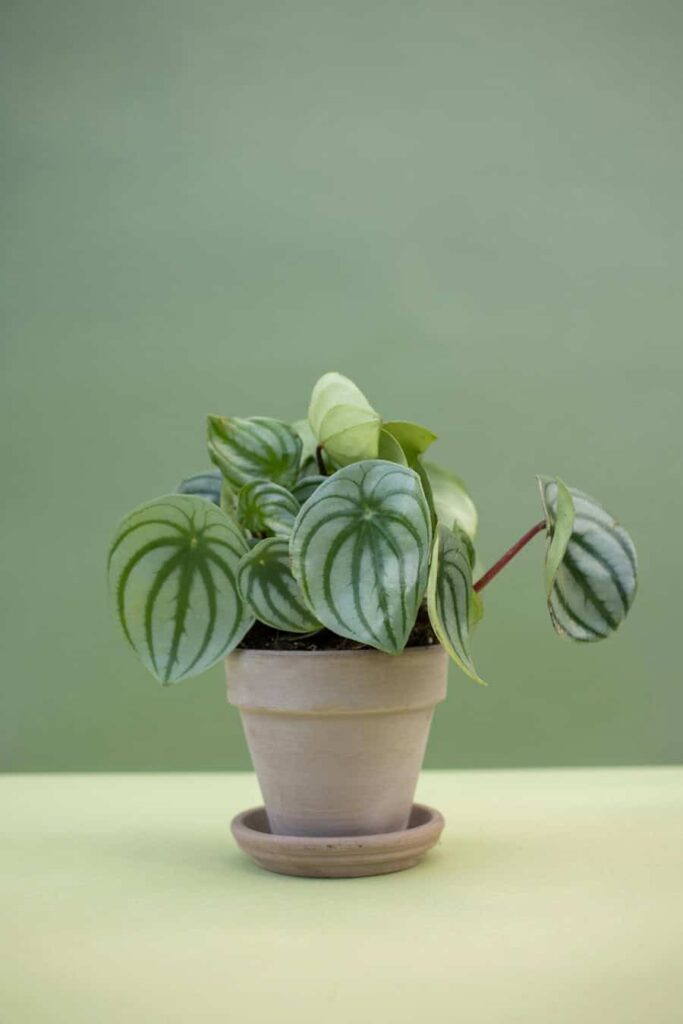
The Peperomia is an indoor plant known for its small, succulent, and fleshy leaves that come in a wide variety of shapes and colors.
Peperomia leaves can be round, heart-shaped, lanceolate, or have wavy edges, and they can come in shades of green, red, silver, cream, or even variegated patterns.
This plant typically has a compact, bushy growth habit, making it ideal for indoor spaces where a manageable and easy-to-care-for plant is desired.
Moreover, Peperomia has good tolerance for low-light conditions and can thrive in environments with moderate humidity levels.
This plant is relatively easy to care for, requiring moderate watering and well-draining soil. Additionally, it is resistant to pests and common indoor plant diseases.
Peperomia is a plant that can be easily propagated through leaf or stem cuttings, allowing plant enthusiasts to expand their collection in an economical and enjoyable way.
4. Begonia Rex
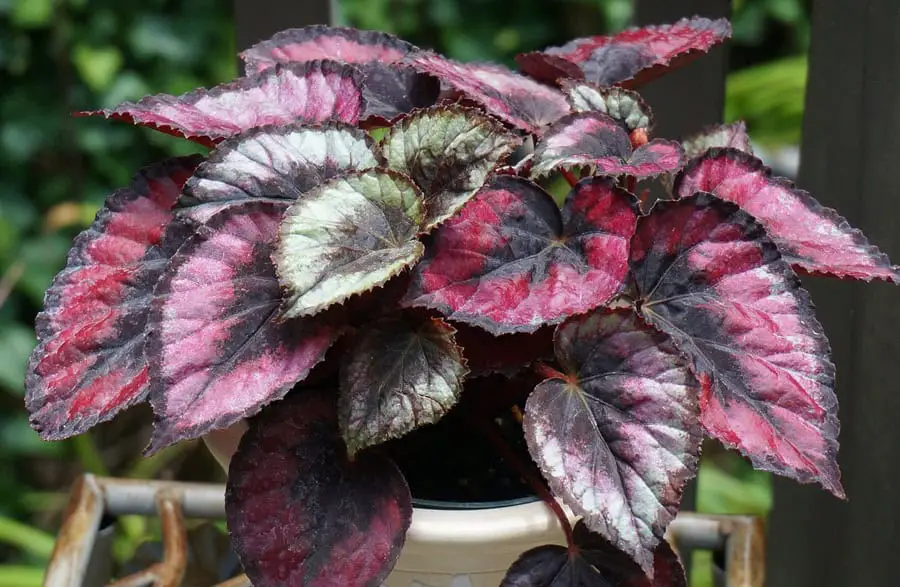
The Begonia Rex is an indoor plant known for its large, round, or asymmetrical leaves that display a distinctive pattern of colors and textures.
These leaves can come in varied shades such as dark green, purple, pink, silver, and even with spots or contrasting edges.
The surface of Begonia Rex leaves is often shiny and smooth to the touch, while the underside typically has a lighter tone.
This plant can also produce small flowers in clusters, although its main attraction lies in the beauty and variety of its leaves, making it a popular indoor plant to add color and elegance to any space.
It typically has a compact size, making it suitable for cultivation in indoor pots without taking up too much space.
The Begonia rex tolerates moderate light conditions and typical indoor temperatures well, as long as direct sunlight exposure is avoided.
Although it requires certain care such as regular watering and a humid environment, the Begonia rex is not particularly demanding compared to other species, making it suitable for people looking for low-maintenance indoor plants.
Like many indoor plants, the Begonia rex helps improve air quality by absorbing certain toxins and releasing oxygen during photosynthesis.
5. Succulents
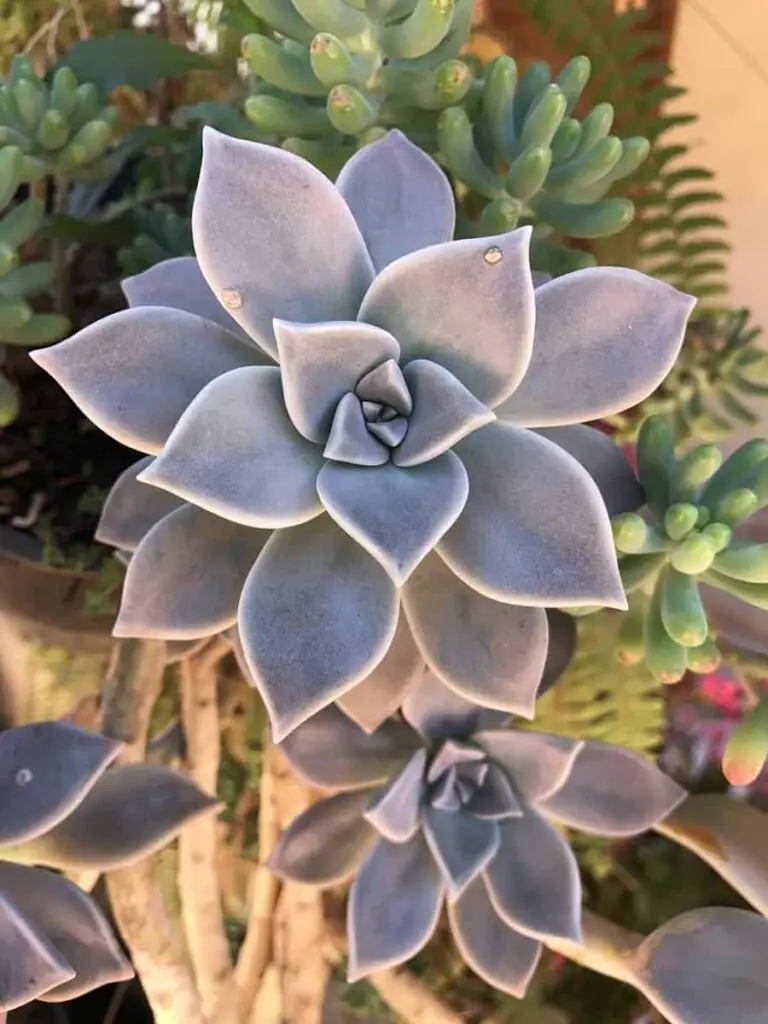
Succulents are fascinating plants known for their ability to store water in their leaves, stems, or roots, allowing them to survive in arid and low-humidity environments.
These plants come in a wide variety of shapes, sizes, and colors. Their popularity as indoor plants has grown due to their low maintenance, requiring less frequent watering and being resistant to varying light conditions.
In addition to their aesthetic appeal, succulents are ideal for decorating small indoor spaces and are easy to propagate, making them favorites among plant enthusiasts and decorators alike.
While many succulents prefer bright light, there are also species that can tolerate lower light levels, making them versatile for decorating different indoor spaces.
Due to their compact size, succulents are ideal for decorating small indoor spaces such as shelves, desks, or tables, adding a touch of nature without taking up much space.
6. Azaleas
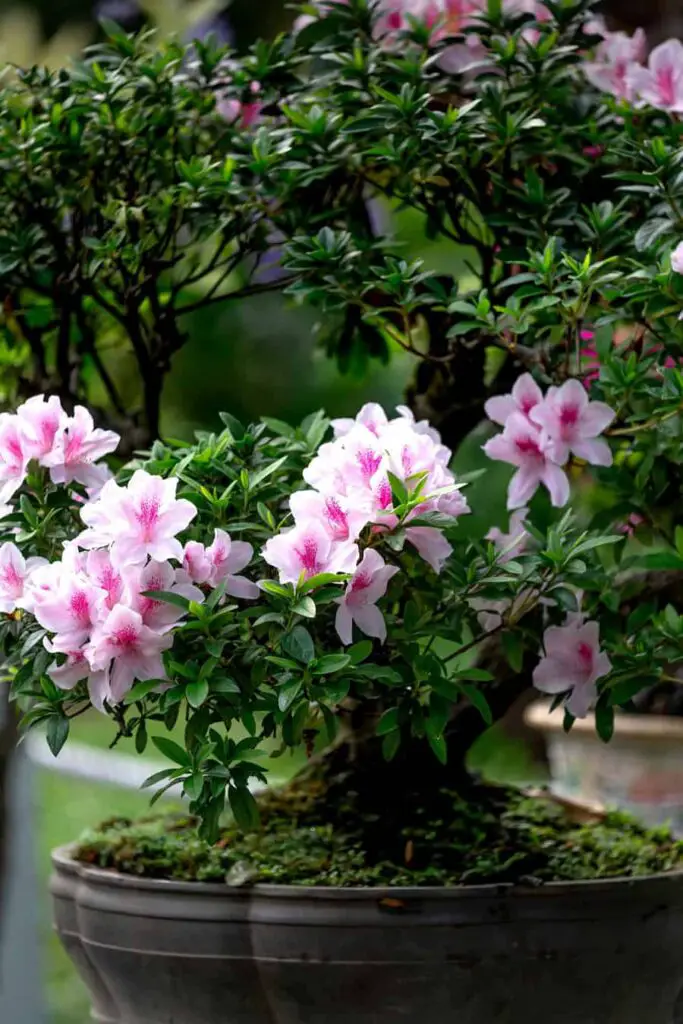
Azaleas are evergreen or deciduous shrubs known for their stunning funnel-shaped flowers that come in a wide range of colors, such as pink, red, white, purple, and orange.
Their flowers are typically medium to large in size and are often clustered in dense clusters that cover the plant’s foliage during the blooming season.
The leaves of azaleas are bright green and can be oval or lanceolate, depending on the species and variety.
Some varieties of azaleas, like the Azalea indica, have been specifically cultivated to grow indoors. These varieties often have lower light requirements and can tolerate indoor conditions better.
Indoors, it’s possible to better control light, temperature, and humidity, creating a more favorable environment for the growth of azaleas.
7. Anthurium
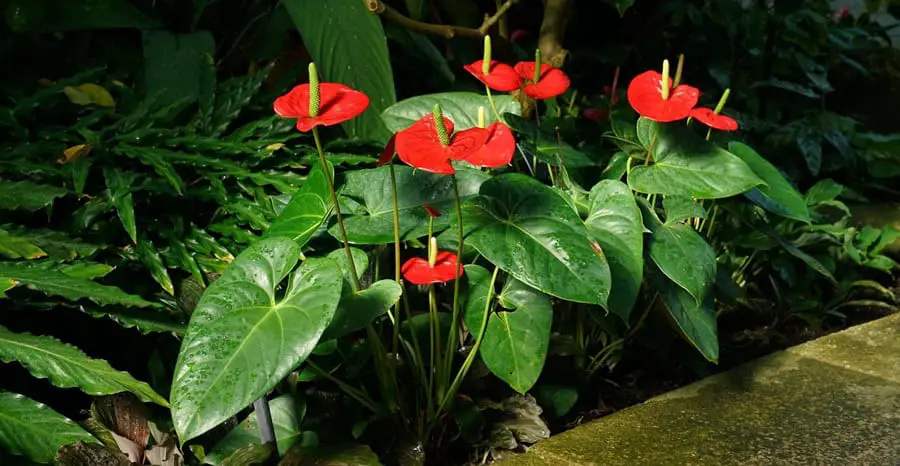
The Anthurium is a tropical plant known for its unique and attractive physical characteristics. Its leaves are large, glossy, and oval to lanceolate in shape, with a leathery texture and an intense green color that can vary slightly depending on the species and variety.
The most distinctive feature of the Anthurium is its inflorescences, which can be bright colors like red, pink, white, or orange, and often have a waxy or glossy appearance.
These flowers can last for several weeks or even months, adding a long-lasting decorative element to the plant. Additionally, the Anthurium can also produce small berries after flowering. Its growth is typically compact and upright, making it suitable for cultivation in indoor pots.
8. Plectranthus verticillatus

Plectranthus verticillatus, also known as Swedish ivy or money plant, is an indoor plant known for its unique and attractive physical characteristics.
It has succulent, rounded, and fleshy leaves arranged in rosettes around thin, hanging stems, giving it a hanging and decorative appearance.
The leaves are intensely green with serrated or slightly wavy edges, and they sometimes feature a speckled or variegated pattern in shades of white or silver.
This plant also produces small white or purple flowers in terminal clusters during the blooming season.
Its trailing growth habit makes it ideal for cultivation in hanging pots or on elevated shelves, adding a touch of freshness and greenery to any indoor space. Its trailing growth habit makes it ideal for cultivation in hanging pots or on elevated shelves, allowing for vertical space utilization indoors and adding a touch of green to areas with limited horizontal space.
Its succulent, rounded, and fleshy leaves, with intense green color and often serrated or speckled edges in white or silver, make it an attractive decorative plant for indoor spaces.
Plectranthus verticillatus can adapt well to moderate light conditions and typical indoor temperatures, provided it is given well-draining soil and watering is controlled to avoid waterlogging.
Like many indoor plants, Plectranthus verticillatus contributes to improving air quality by absorbing certain toxins and releasing oxygen during photosynthesis.
9. Gloxinias
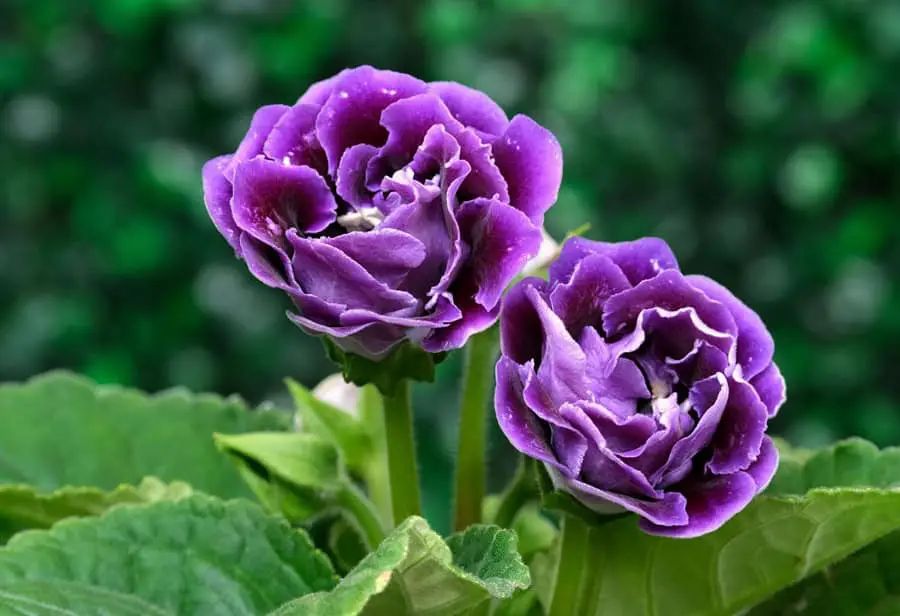
Gloxinias (Sinningia speciosa) are perennial herbaceous plants known for their stunning bell-shaped flowers in vibrant colors, ranging from white, pink, and red to purple, blue, and violet.
Their flowers can be single or double, with a soft and delicate texture that makes them especially attractive.
Gloxinias’ leaves are large, velvety, oval to oblong in shape, with serrated edges and a bright dark green color.
These leaves are arranged in rosettes around the flower stems, creating a compact and lush appearance in the plant.
Their growth habit is typically upright, although the flowers may droop downward due to their weight. Gloxinias are appreciated as ornamental plants indoors due to the beauty of their flowers and their easy care in controlled environments.
Gloxinias usually have a compact size and an upright growth habit, making them suitable for cultivation in indoor pots without taking up too much space.
Although they require certain care such as regular watering, avoiding waterlogging, and providing suitable temperature and humidity, Gloxinias are not too demanding compared to other indoor plant species.
If provided with the right conditions, Gloxinias can have a prolonged flowering period, allowing you to enjoy their beautiful flowers for several weeks or even months indoors.
10. Philodendron
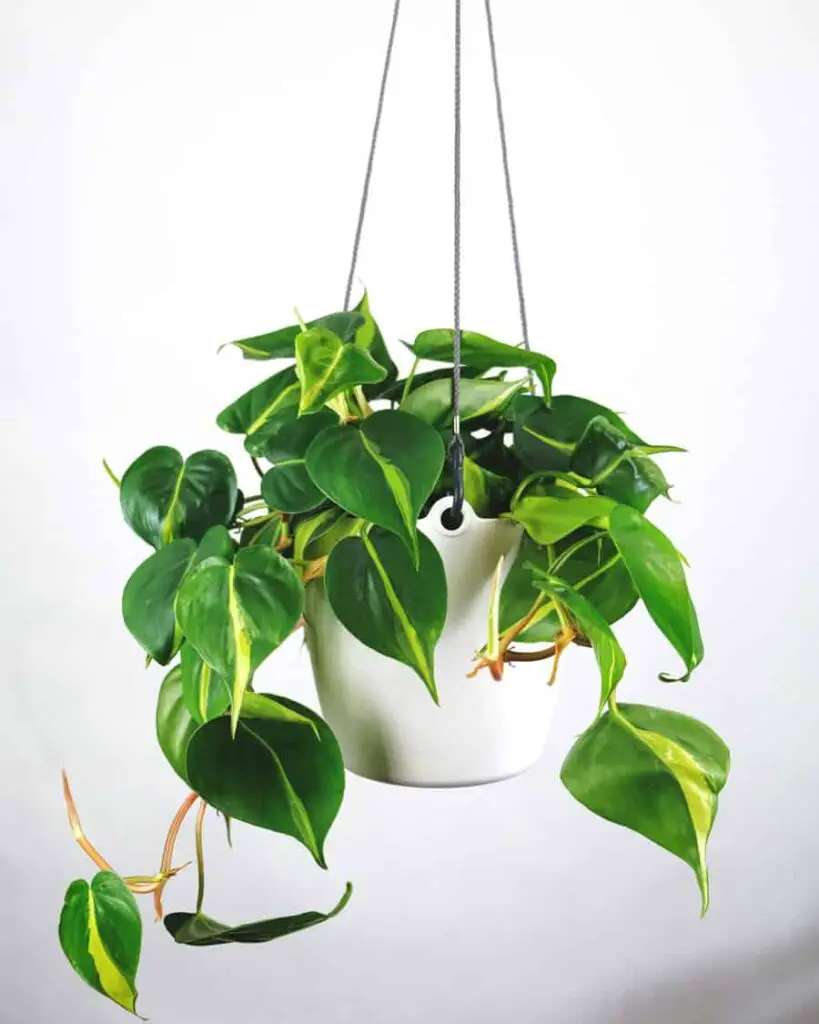
Philodendrons are a popular indoor plant known for their distinctive physical characteristics. Their leaves are large, shiny, and typically oval or heart-shaped, with an intense green color that can vary slightly depending on the species and variety.
Some Philodendron varieties may also have variegated leaves with white, cream, or yellow color patterns.
These leaves often grow on long, thin stems that can climb or hang, depending on the variety and the environment in which they are cultivated.
Additionally, Philodendrons can produce small and discreet flowers under ideal conditions, although it’s the leaves that primarily attract attention and make this plant a popular choice as a decorative indoor plant.
Philodendrons can adapt well to moderate light conditions and consistent temperatures typical of indoor environments. However, they can also tolerate certain variations in light and humidity.
They are relatively easy to care for, requiring moderate watering and well-draining soil. Additionally, they are resistant to pests and common indoor plant diseases.
Like many indoor plants, Philodendrons contribute to improving air quality by absorbing certain toxins and releasing oxygen during photosynthesis.
Conclusion
Cultivating plants indoors can be a rewarding and therapeutic experience that transforms our spaces into havens of serenity and freshness. In this article, we have explored the advantages and benefits of having easy-to-care-for indoor plants, which not only beautify our surroundings but also contribute to improving our health and well-being.
As we discover the diversity of plants that easily adapt to our daily routines and living conditions, we realize that creating a green environment in our home is more accessible than we think.
With a little attention and care, these plants can become loyal companions that bring us joy and connection with nature in our daily lives.
Ultimately, indoor plant cultivation is not just a decorative activity but also a way to cultivate a healthier, harmonious lifestyle in tune with the surrounding nature.